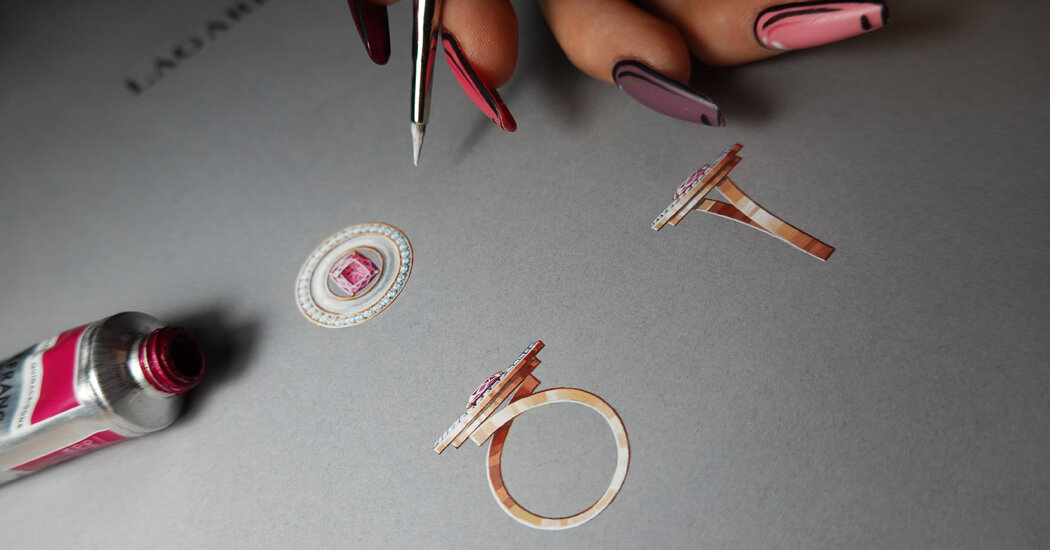
There are myriad words to describe how light enters and reflects in diamonds and gemstones. They glisten and sparkle, twinkle and dazzle. Often they are luminescent, sometimes brilliant and certainly eye-catching.
But conveying those sentiments artistically, as in a drawing or painting, requires an entirely different kind of articulation. And as times have changed, so have the techniques used to capture jewelry, as well as the reasons for depicting it.
“There is a code to always respect so that the eye can read the volume and the jewelers can understand the design,” Estelle Lagarde, 29, a gouache painter and jewelry designer in the Haute-Savoie region of eastern France, wrote in an email. “The light always comes from the top, at 45 degrees to the left. Thanks to this code, we know where to place the shadows and light.”
Ms. Lagarde’s use of that code, which guides artisans turning designers’ ideas into reality, can be seen in her meticulously detailed images of jewelry and watches. She begins each project the same way: making a contour drawing using a software program, “in order to have the exact dimensions of the technical drawing and the contours of the piece.” She then prints the sketch on a sheet of gray paper and fills its curves and spaces using paint pigments and a long, thin hair brush, called a rigger brush, that allows her to paint fine lines and intricate details.
She has created artworks for watch brands such as Vacheron Constantin, MB&F and Purnell and for jewelry companies including Messika and her own Lagarde Jewelry. And she always sells her jewelry with its matching painting, and also accepts painting commissions. Currently, a ring called Pop Candy (21,000 euros, or $22,630) is her entry level piece.






